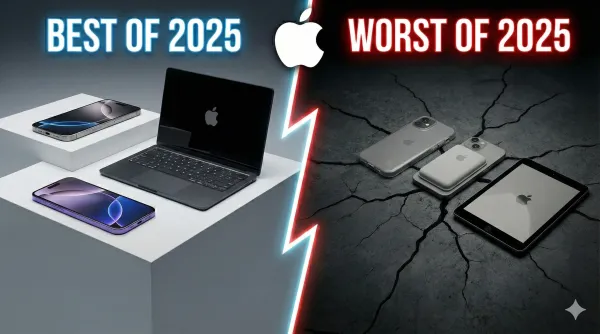-
Nov 25, 2024, 3:48 pm949 pts Special Content
Special ContentSecurity for streaming on Apple devices integrates multiple layers of protection to safeguard your content and personal data. You'll find comprehensive app shielding with runtime protection, biometric authentication systems, and device security verification protocols working together. With IPTV Provider services, your streaming experience is protected through content access controls that include geographic restrictions and device binding technology. Data privacy measures employ end-to-end encryption and leverage Apple's Keychain for secure storage, while real-time monitoring systems actively detect and prevent unauthorized access. Understanding these interconnected security features will unlock insights into how your streaming activities remain protected against evolving threats.
App Shielding and Runtime Protection
When developing streaming applications for Apple devices, implementing robust app shielding and runtime protection measures is essential to safeguard both user data and intellectual property. Through comprehensive code obfuscation and data encryption techniques, you'll protect your app's core functionality from potential threats and reverse engineering attempts.
Brands can leverage Runtime Application Self-Protection (RASP) to establish a dynamic defense mechanism that monitors and responds to security threats in real-time. RASP's sophisticated capabilities enable the detection of runtime tampering, app cloning, and repackaging attempts, ensuring your streaming app maintains its integrity throughout its lifecycle. By offering special runtime security features, you'll create multiple layers of protection that actively defend against unauthorized access and potential vulnerabilities.
Implement encrypted communication channels between your app and backend servers to prevent data interception and maintain user privacy. RASP's comprehensive logging and monitoring capabilities allow you to track security incidents, enforce policies dynamically, and respond to emerging threats promptly. These protective measures work together to create a secure environment for your streaming app, protecting sensitive content and maintaining user trust in your platform.
Biometric Authentication Implementation
Building upon robust app shielding measures, biometric authentication adds a powerful layer of security to streaming applications on Apple devices. You'll find that implementing fingerprint or facial recognition delivers a seamless login experience while significantly strengthening your app's security posture. When you integrate these biometric features, you're not just enhancing app protection; you're also ensuring compliance with industry regulations and safeguarding intellectual property.
To maximize the benefits of biometric authentication, consider these critical implementation aspects:
- Real-time monitoring and comprehensive logging capabilities that let you track authentication attempts and identify potential security breaches immediately
- Tamper detection mechanisms that prevent unauthorized modifications and protect against reverse engineering attempts
- Dynamic security policy enforcement that adapts to emerging threats while maintaining user privacy
Your implementation of biometric authentication will improve user trust by protecting sensitive data and preventing account takeovers. This security measure proves particularly effective when combined with runtime protection, as it creates multiple barriers against unauthorized access. By leveraging Apple's biometric frameworks, you'll establish a robust security system that maintains both convenience and protection for your streaming service users.
Device Security Verification
Device security verification serves as a critical foundation for protecting streaming content on Apple devices. Through comprehensive device integrity validation, you'll establish a hardware-based root of trust that ensures your streaming platform operates only on trusted, uncompromised devices. This verification process actively checks for jailbroken or rooted devices, preventing potential security breaches at the system level.
Your security framework should implement runtime application self-protection (RASP) mechanisms to monitor and defend against unauthorized modifications during app execution. By continuously validating firmware version checking and device state, you'll maintain a secure environment for content delivery. The system must enforce strict security policies that restrict access to apps exclusively from official App Store distributions, reducing the risk of compromised applications.
To strengthen your security posture, you'll need to maintain detailed logging and monitoring systems that track device verification status and potential security incidents. These logs enable real-time vulnerability assessment and ensure compliance with content protection requirements. When combined with device integrity checks, this multi-layered approach creates a robust security framework that safeguards your streaming content while maintaining a seamless user experience.
Content Access Control Methods
Three essential content access control methods form the cornerstone of secure streaming on Apple devices. You'll find robust implementations that prevent unauthorized access while maintaining seamless streaming for legitimate users. Through geographic location restrictions, the system automatically enforces regional content boundaries, ensuring compliance with licensing agreements and preventing cross-border access violations.
To maximize security, you'll encounter these critical protective layers:
- Device binding technology that links your account to specific Apple devices, preventing unauthorized sharing and ensuring exclusive access for registered hardware
- Multi-factor authentication protocols requiring biometric or PIN verification before granting access to premium content
- Advanced user behavior monitoring systems that detect suspicious activities and prevent credential stuffing attempts
The platform's continuous monitoring capabilities analyze your streaming patterns, login attempts, and device usage to identify potential security breaches. When you're accessing content, the system actively validates your credentials while scanning for signs of account hijacking or unauthorized sharing. These measures work together to create a comprehensive security framework that protects both your account and the streaming service's content from unauthorized access.
Data Privacy and Encryption
Robust data privacy and encryption protocols form the foundation of secure streaming experiences on Apple devices. Your personal data, including login credentials, streaming history, and customized playlists, are protected through comprehensive encryption mechanisms that align with stringent key management strategies. The implementation of end-to-end encryption ensures your data remains secure during transmission between your device and backend servers.
Access control policies are reinforced through Apple's Keychain and Hardware Security Module integration, providing a secure environment for storing sensitive information on your device. These security measures complement data backup and recovery procedures while maintaining GDPR compliance and other regulatory requirements. You'll find that your streaming experience is protected by continuously updated encryption algorithms that adapt to emerging security threats.
The platform's security framework incorporates advanced cryptographic protocols to safeguard your recommendations and viewing preferences. By leveraging Apple's native security features and industry-standard encryption methods, you're assured that your streaming activities remain private and protected. Regular security audits and updates ensure that your data encryption remains robust and aligned with the latest cryptographic advancements, maintaining the highest levels of privacy protection.
Frequently Asked Questions
What Security Measures Does Apple Use?
You'll find Apple employs robust device encryption methods, comprehensive firmware protection features, and advanced network security protocols to safeguard your data, while the Secure Enclave provides hardware-level protection for sensitive information.
How to Secure Your Apple Devices?
You'll need regular device configuration updates, strong data encryption measures, and careful third-party app vetting. Enable two-factor authentication, use biometric security, and keep your iOS updated for optimal device protection.
Do Apple Devices Need Security?
Yes, you'll need security for your Apple devices. While they're inherently secure, you should still use device encryption, enable malware protection, and set up parental controls to safeguard against evolving digital threats.
Do I Need Extra Security on My Apple Devices?
You don't need extensive extra security on your Apple device, but you should maintain adequate password protection, enable automatic software updates, and consider a virtual private network for enhanced privacy when using public networks.
Trending Today on MacHash
MacHash is your real-time Apple news aggregator, delivering the latest headlines on Apple, Mac, iPhone, iPad, and iOS from top sources across the web.
As a powerful content discovery platform, MacHash continuously curates breaking news, product announcements, software updates, reviews, and industry insights related to Apple Inc. and its ecosystem.
MacHash helps you stay informed on everything from macOS and iOS developments to Apple Watch, AirPods, and the latest in tech and app innovation.
Access MacHash from your desktop or mobile device to explore, follow, and share the most trusted Apple news all in one place.










